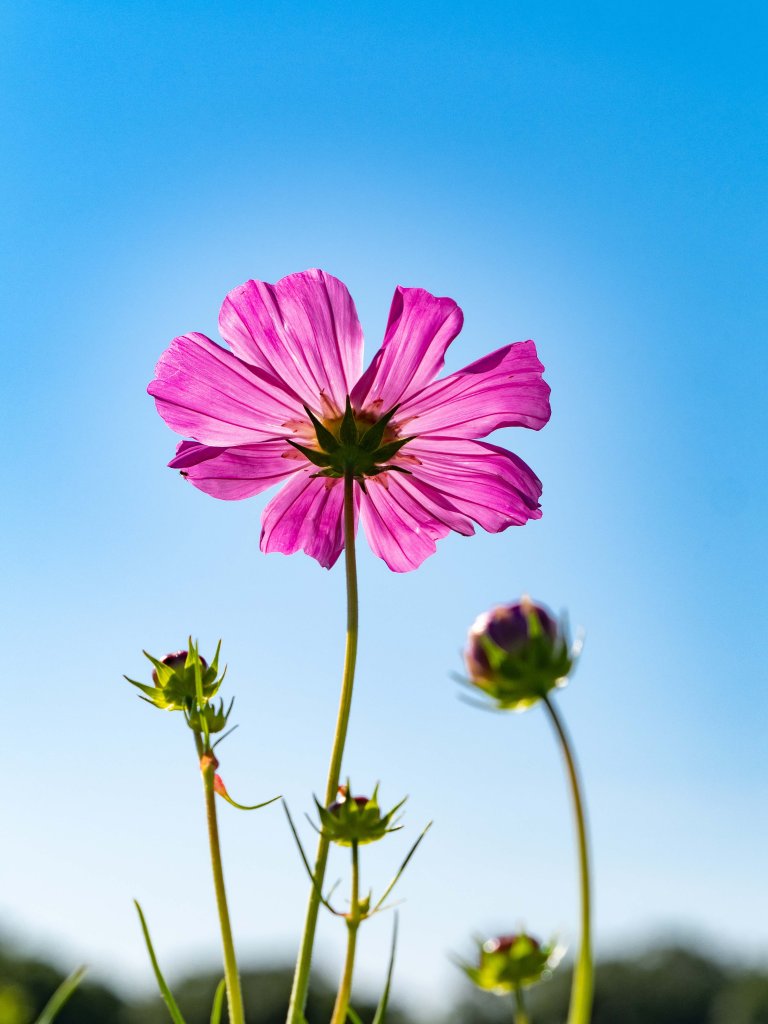Cultivating Wonder and Awe in the Classroom
Exposing students to amazing things creates a classroom environment where they feel creative, engaged, and primed to learn.
Your content has been saved!
Go to My Saved Content.I’m sitting in the bleachers in the gym, watching a group of students in the jazz band play a song. It’s an upbeat tune, and my head gently bobs to the music as I drift into planning mode. Just then, a ferocious drum solo erupts. My student Justin is playing, his face beatific and his arms moving so rapidly that I can’t track them. The sound is intense, wild, and utterly captivating. The hairs on the back of my neck raise. Cocooned in rhythm, I’m aware that I am witness to a force greater than the sum of its parts. Justin is a drum virtuoso who has clearly unlocked a new level of performance. The crowd rises to its feet, clapping, as Justin’s solo concludes. “Whoa,” I think.
What I’ve just described is an experience of awe: that feeling you get when confronted with mysteries beyond understanding in a vast world of wonders. Sometimes we feel awe when we hear beautiful music, as happened to me in the gym. Other times, we feel awe when we recognize the pleasing symmetry of nature, as in the petals of wildflowers.

Still other times, we experience awe when we feel moved by what UC Berkeley psychologist Dacher Keltner calls “moral beauty”—being amazed by the excellence we see in others.
AWE IN THE CLASSROOM
As a teacher, I’ve long tried to infuse awe and wonder into my activities, in part because I love it when kids go “Whoa!” but also because I know that after the “whoas,” the kids are primed to learn. For example, when I take the time to show students cool images of space, after a few minutes of marveling, they are much more eager and prepared to write stories featuring space travel, aliens, or a climate-positive future.
Research conducted in the past 20 years or so backs up my anecdotal experience. According to psychologists Barbara Frederickson and Michelle Tugade’s “broaden and build” theory, positive emotions like awe can temporarily increase our attention, which, over time, also builds resilience. Further, in his 2023 book, Awe: The New Science of Everyday Wonder and How It Can Transform Your Life, Dacher Keltner writes that “as children develop, regular feelings of awe animate their curiosity in school and predict better academic performance for students in underresourced [sic] neighborhoods.”
Indeed, the premise of Keltner’s book is that when we consistently tap into the everyday awe available to us, there is a positive impact on our mood, attention, and feeling of connectedness.
6 things that Evoke Wonder, Curiosity, and Awe
Perhaps the greatest aspect of incorporating more wonder and awe into your classes is that wonder is readily accessible. All you need is five or 10 minutes, a few days per week. Here are some ideas to get you started.
1. The universe: Contemplating our relative smallness in the universe evokes awe, so show your students images from the James Webb Space Telescope—they are amazing.
2. Other people: As students enter the room, give them an index card and ask them to write down the name of a person who has been influential in their life. Have everyone share a few words about why that person is inspiring. Ask students to notice patterns in what inspires them… it tends to be overcoming obstacles, devoting oneself to a cause, or demonstrating courage. The excellence of others—expressed as love, compassion, kindness, humility, generosity, or dedication—helps us experience a sense of wonder and warm engagement.
3.Play: Moving in unison with others, what Keltner calls “collective effervescence,” is an ancient source of awe. When we gather to dance, play, watch an event, celebrate, or otherwise engage in rituals, we experience the world through the lens of “us.” To get a little effervescence going in your classroom, try giving each of your students mailing labels as they enter the classroom with instructions on them, like “Hop on one foot and quack like a duck” or “Pretend to conduct the music you’re about to hear.” Then, as a group, have them carry out the actions.
To connect this activity to your curriculum, make it a lesson in writing or following directions. As an English teacher, I’d ask students to edit the language of the instructions for clarity or have them write their own directions for peers, such as how to walk from school to their favorite ice cream shop.
4. Art: Paintings, photographs, sculpture, and architecture stir wonder and awe. Knowing this, I like to have my students submit a picture that they find beautiful; then I jam all the pictures together in a slide show. “Whoas” and “oohs” echo throughout the room as the images advance. On these days, I ask students to write about beauty or wonder. Students have told me that positive emotions are harder to write about than negative emotions, but the images help make the “wonderful” a bit more concrete and describable.
5. Nature: Consider taking your class on an “awe walk” to experience nature. An awe walk is simply a stroll around the campus in which you ask students to notice the nature around them. Even when much of your campus is concrete and asphalt, nature abounds: Flowers sprout from cracked asphalt, birds glide in formation overhead, leaves rustle and sigh in the wind. These sights and sounds, when attended to, can calm our nervous systems and improve our sense of connectedness.
6. Ritual and community: Create rituals around content or skills that resonate with students. For example, after reading The Hitchhiker’s Guide to the Galaxy and experiencing mice rolling around our classroom in hamster balls (I put them there—it was fun), my students created the ritual of greeting each other with “The secret to life is 42.” The proper response was “So say Benjy and Frankie.” Ultimately, this ritual ran its course, but not before students said, “Hey! Do you get it? This connects to…”
As is true for all elements of our planning, one person’s awe is another person’s ho-hum, so it’s important to experiment with a multitude of awe pathways. Nature is pretty reliable—it’s a function of being human!—but baby animals may appeal more to some students than nebula images.
What I know for certain is that it is 100 percent worth the time and effort to plan for awe a few times per week. After we do these quick activities, my students are calmer, more engaged in the work, and more creative. This makes class a very pleasant place to be, and at the end of these work days, I find myself saying, “Whoa. What a great day.”
